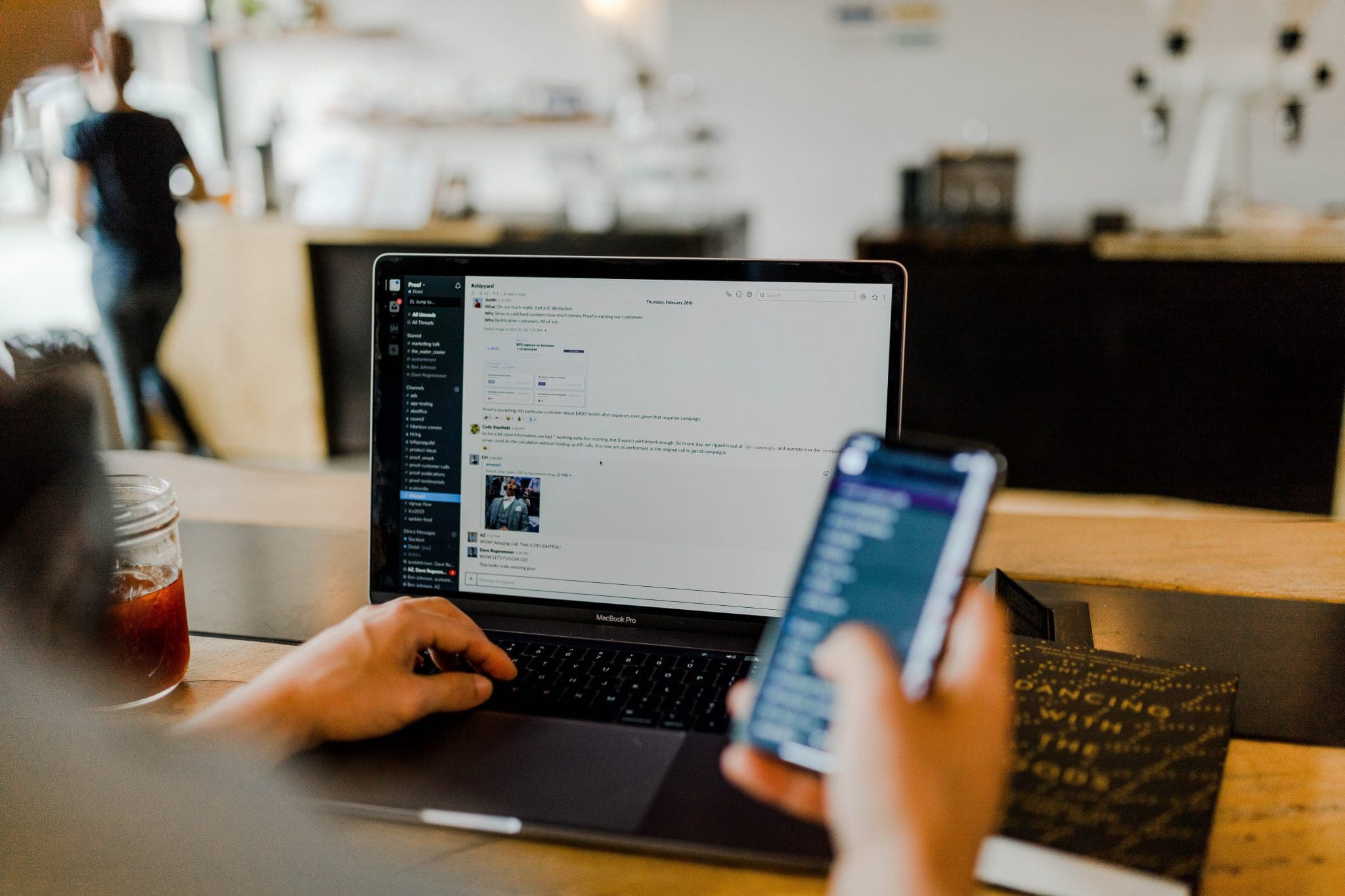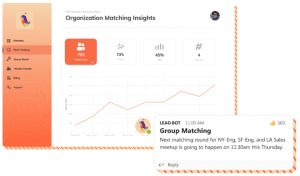As a leading advertising agency in the healthcare field, the New York-based health organization thrives in a fast-paced environment. However, when the pandemic hit and the workforce transitioned to remote work, the agency faced a new challenge—reduced interaction among coworkers.
Janice, a member of the health organization, acknowledged this issue: “A lot of feedback we receive is that employees don’t have the opportunity to connect with colleagues outside of their own team. Despite being a 150-person company, interactions are limited to the same 15 individuals.
To address this challenge, the health organization recognized the need to implement a connections program using a company culture app. The objective was to facilitate connections among employees who don’t typically interact, fostering a stronger company culture, boosting employee engagement, and reducing turnover.
Aligned with the health organization’s core values of courage, curiosity, grit, and generosity, employees are encouraged to embrace innovation while prioritizing the needs of clients and colleagues. Recognizing the significance of nurturing a strong organizational culture in the evolving remote work landscape, LEAD engaged with the health organization’s Connections Program team in 2021. Their mission was to enhance and shape the agency’s culture, adapting it to the demands of a remote work environment.
Adapting To Change
As a leading advertising agency in the healthcare field, adaptability is ingrained in our DNA. When the global pandemic forced offices to shut down and remote work became the new norm, the health organization rose to the challenge. However, remote work brought forth a new concern – a lack of interaction and connection among coworkers.
Janice, a representative from the health organization, explains, “A lot of feedback we get is that you don’t get to talk to people outside of your team. We work at a 150-person company, but I only talk to the same 15 people.”
Recognizing the importance of employee engagement and well-being, the health organization sought to implement a connections program that would strengthen company culture, foster engagement, and reduce turnover. Enter LEAD.bot, a solution designed to bridge the gap between employees, promote collaboration, and enhance employee well-being in the healthcare industry, as well as other companies.
Employee well-being and engagement are critical factors in the healthcare industry, and the health organization’s HR department understands the importance of supporting their workforce. By integrating LEAD.bot into their HR initiatives, the health organization can facilitate meaningful connections and collaboration among employees, fostering a positive work culture that prioritizes employee engagement and well-being. LEAD.bot’s innovative features, such as employee matching, virtual coffee breaks, and icebreaker activities, have proven instrumental in improving team dynamics and overall job satisfaction.
In the fast-paced healthcare industry, building a strong sense of camaraderie and collaboration among employees is crucial, especially in a remote work environment. The health organization’s HR department recognized the need to bridge the gap between teams and individuals working in different locations. With LEAD.bot, they found the perfect solution to enable efficient employee matching, facilitate virtual coffee breaks, and encourage icebreaker activities. The result? Enhanced communication channels, increased employee morale, improved productivity, and bolstered mental well-being in the healthcare industry.
The rapid evolution of the healthcare industry, coupled with the rise of remote work, necessitated a proactive approach from the health organization’s HR department to maintain a sense of community and cohesion among employees. By leveraging LEAD.bot’s employee matching capabilities, the HR department successfully facilitated cross-team collaboration, encouraged knowledge sharing, and strengthened interpersonal connections. This forward-thinking approach not only fostered a positive work environment but also significantly enhanced employee engagement, retention, and overall organizational success in the healthcare industry, and beyond.
As the healthcare industry continues to evolve and remote work becomes more prevalent, prioritizing employee engagement and well-being remains paramount. LEAD.bot serves as a powerful tool to connect employees, promote collaboration, and foster a positive work culture that enhances employee engagement and well-being in the healthcare industry, driving organizational success in the face of change.
Finding A Way to Connect
Recognizing the need to improve cross-team engagement, the health organization was determined to find effective solutions. Janice shares, ‘Our focus was on establishing better connections among employees.’ Amidst numerous available programs, Janice prioritized the selection of a platform that would ensure active participation—an assurance found in LEAD.bot. In her quest for an impactful solution, Janice tapped into her network, where she discovered the concept of an employee matching bot designed specifically for Microsoft Teams. She also learned of other organizations’ achievements in remote team building through such bots.
Motivated by her determination to find effective solutions, Janice conducted thorough research and came across LEAD.bot. Instantly, she recognized the immense value it held in fostering connections between employees and managers across the organization. ‘When we discovered LEAD.bot, we realized it could be a powerful tool for enhancing employee engagement in the virtual world,’ Janice recalls, highlighting the promising potential of the software.
Reaching Across Teams
In the case of the health organization, the utilization of LEAD.bot transcends the sole objective of cultivating a strong company culture. With approximately 20 teams operating within the agency, cross-team interaction among employees was a rarity. The virtual onboarding process posed significant challenges, and fostering connections across teams seemed virtually unattainable. The impact of COVID-19 further exacerbated the issue. However, leveraging LEAD.bot, the health organization seamlessly executed employee matching, providing employees with fresh opportunities to connect and engage through Microsoft Teams.
Janice and the health organization discovered that LEAD.bot offers flexible employee matching options, allowing customization based on specific requirements. The platform facilitates cross-team connections, ensuring that individuals are matched with new people from different teams. Alternatively, it enables matching within the same team, fostering icebreakers, virtual coffee breaks, webinars, or quick activities. By utilizing LEAD.bot to establish connections, the health organization streamlined the process, enabling more time to be dedicated to cross-team communications rather than manually matching employees in the hopes of creating connections.
In the healthcare industry, where employee engagement and retention are paramount, establishing a robust company culture is essential. The health organization recognized the significance of addressing the unique challenges faced by its HR department in fostering connections and engagement among remote teams. LEAD.bot emerged as a valuable solution, aligning with the organization’s goals of enhancing employee well-being and satisfaction. By leveraging LEAD.bot’s capabilities, the health organization’s HR department successfully navigated the complexities of remote work, strengthening connections, and promoting a positive work environment.
Building A Stronger Culture
Undoubtedly, remote work poses challenges to nurturing a robust company culture. However, forward-thinking organizations like health organizations have found creative solutions to foster a modern work culture in remote or hybrid setups. In addition to enhancing cross-team communication, facilitating introductions between new hires and existing employees, and promoting talent retention, the health organization utilized LEAD.bot to cultivate its remote work culture. Janice emphasizes that their choice to implement LEAD.bot was driven by the aim of fostering connections across diverse teams. With the promise of expanded functionality in the bot, they eagerly anticipate exploring new avenues for establishing a resilient remote work culture.
The New Normal
Although a semblance of normalcy is slowly returning, the transformative impact of COVID-19 is enduring. Towards the end of 2022, we revisited the health organization and engaged in a conversation with Janice. She shared insights, revealing that while the company hasn’t made any official announcements or plans, it anticipates remote work will continue to be a significant component of their operations. Janice elaborates, ‘There are no immediate plans for a full-time office return, so we assume we will maintain a partial remote setup.’ This shift towards a partially remote workforce extends the possibility of full-time employees residing outside of New York.
It is evident that the challenges associated with remote work, such as culture building and fostering cross-channel connections, will persist beyond the pandemic. Consequently, the health organization recognizes the need for ongoing innovation and exploration of methods to cultivate a modern company culture. As the workplace continues to adapt to the impacts of COVID-19 and embraces future changes, fulfilling the flexible aspirations of many employees, LEAD.bot stands as a steadfast tool, ensuring seamless adaptation and growth.



